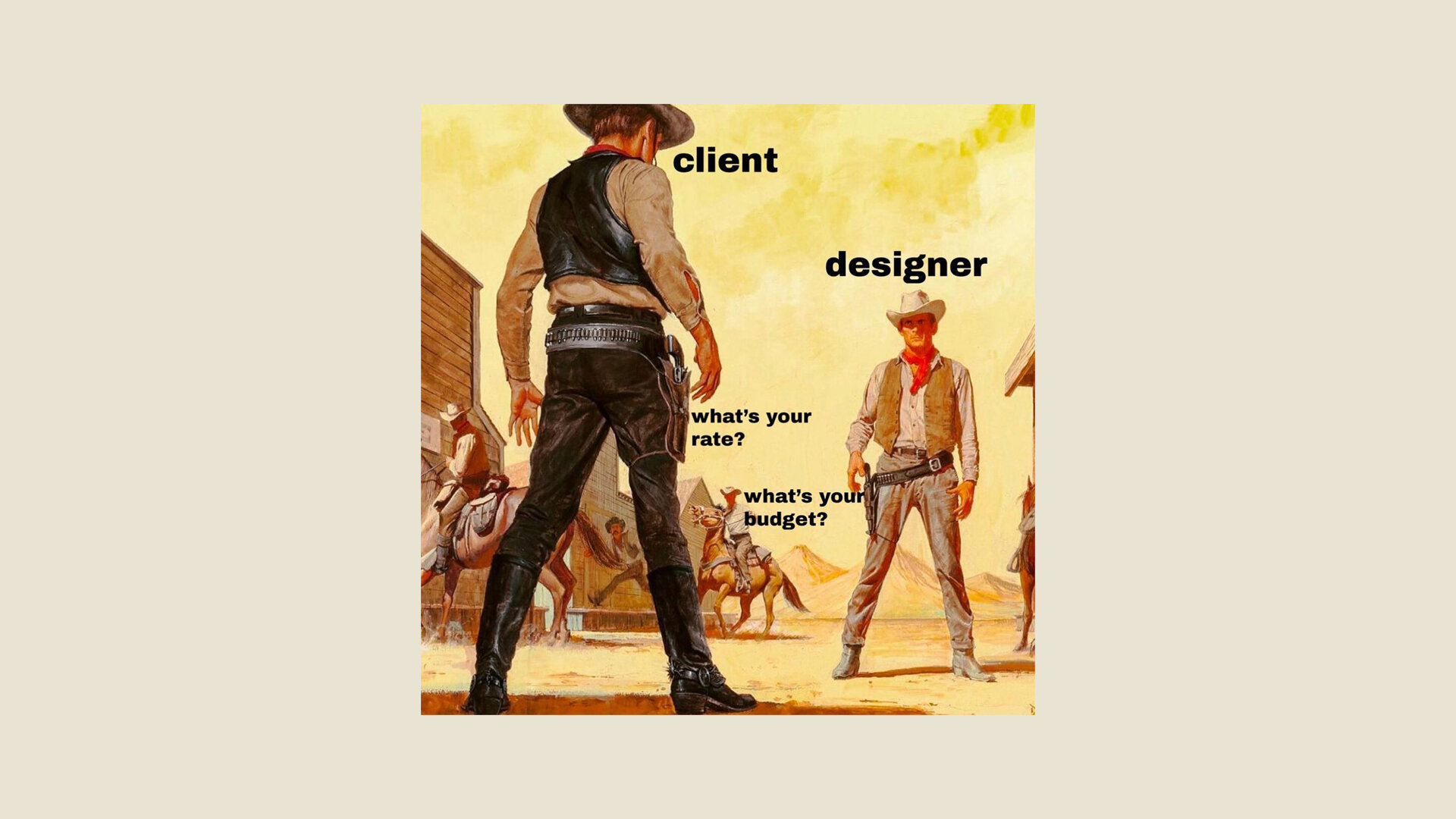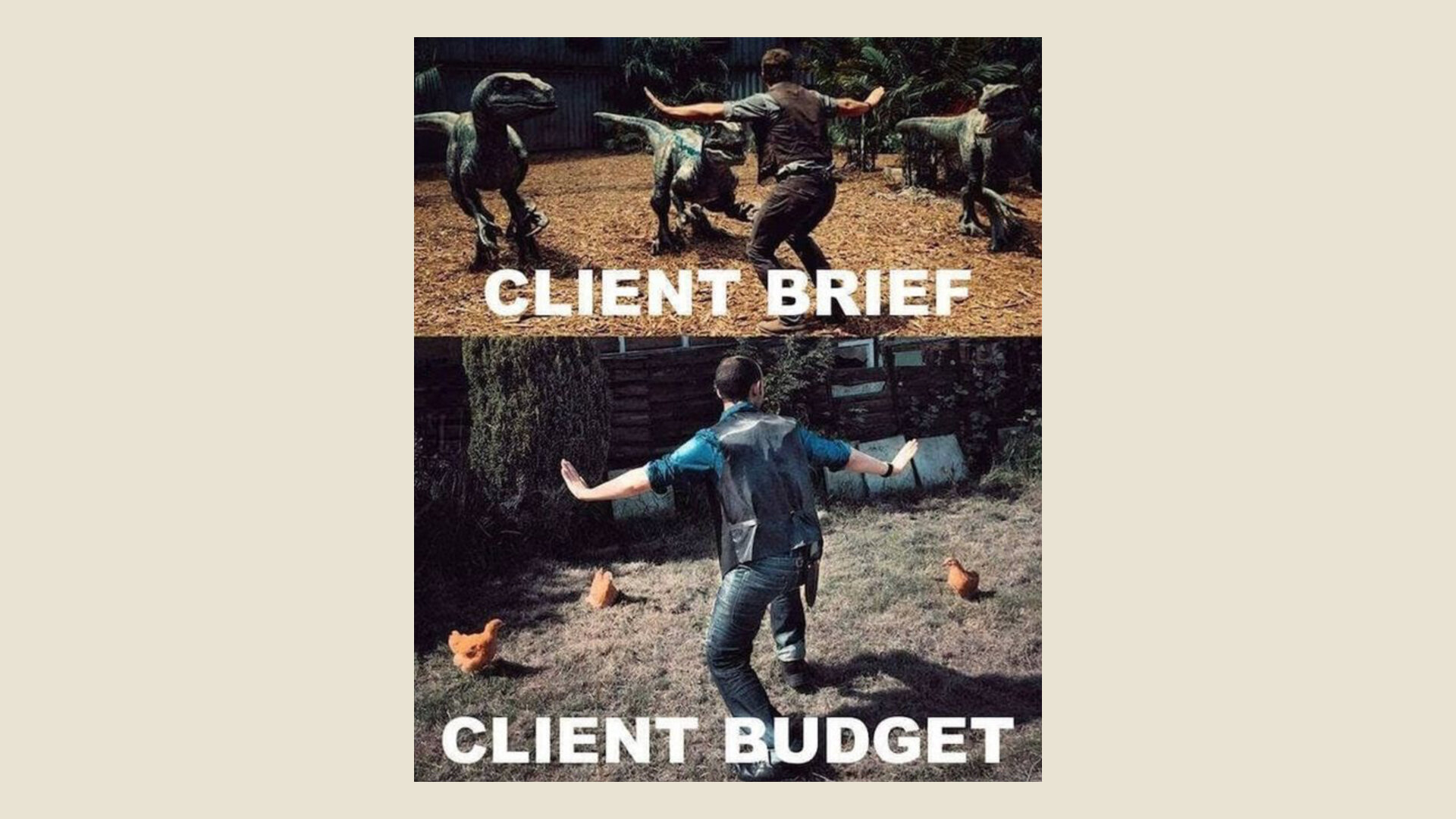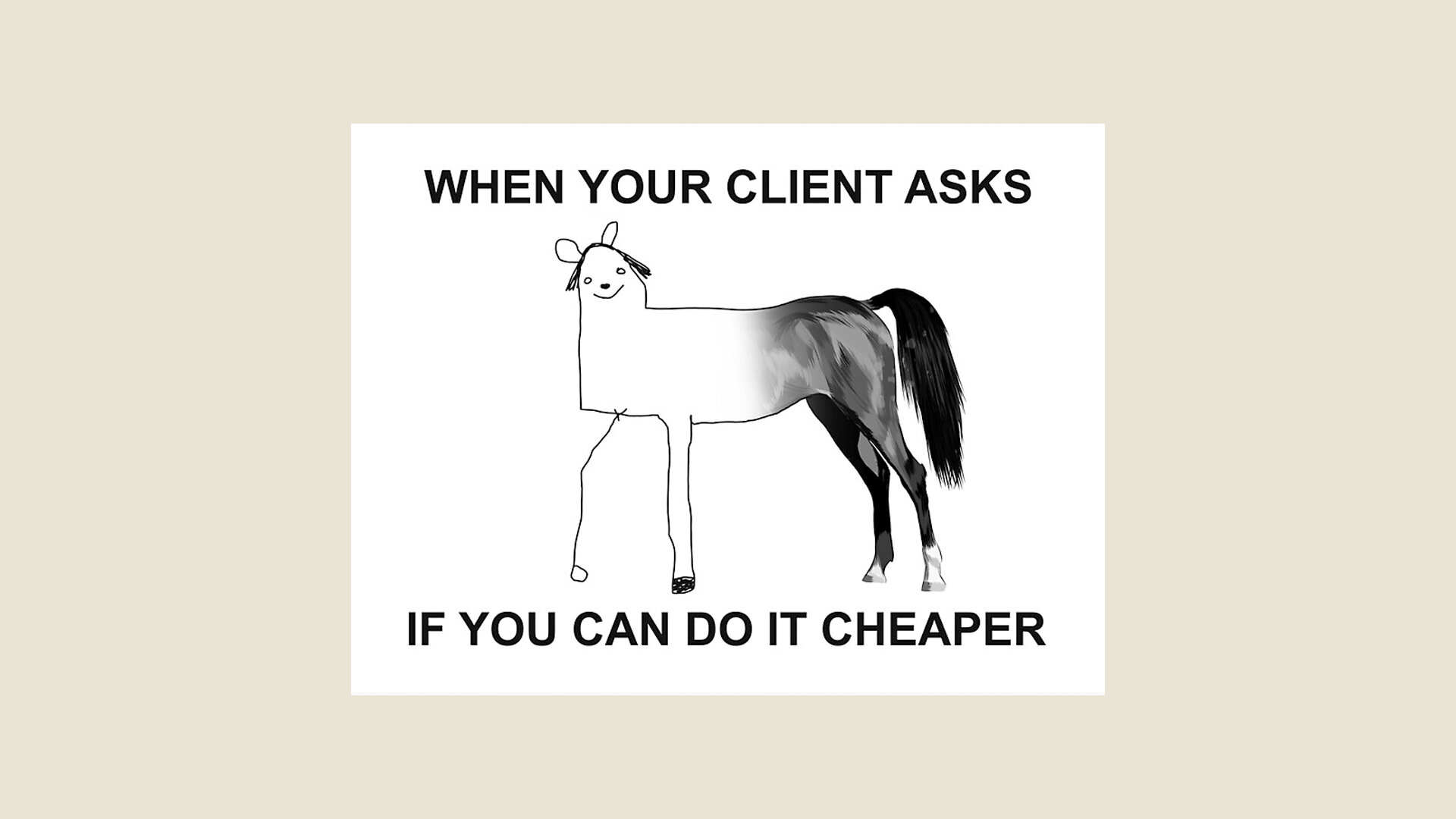02.11.23 / Daniel Ibbotson
What should my design budget be?
Some thoughts on design budgets and how to figure out the best way to spend in order to achieve your business goals.
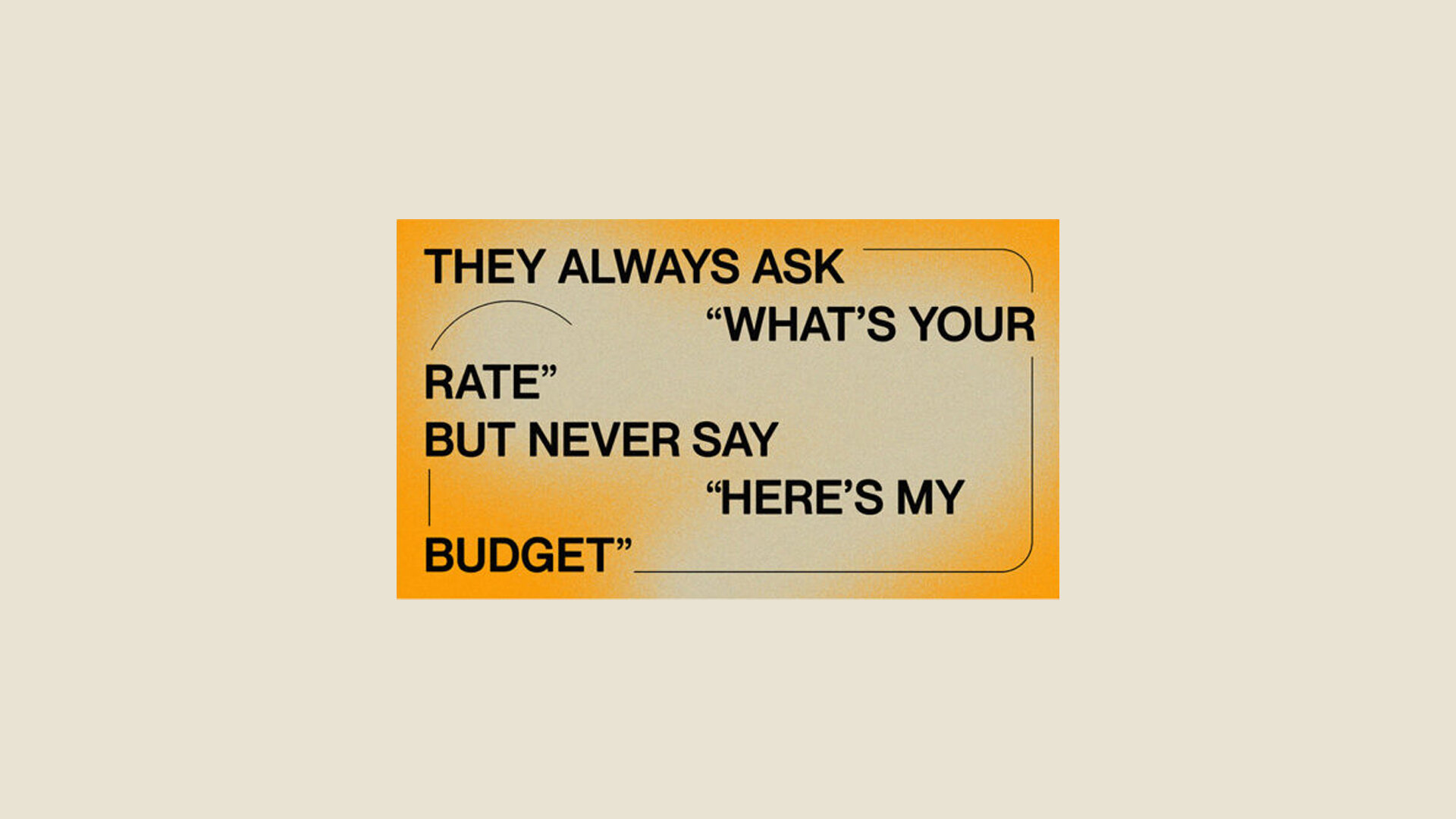
Designer: What is your budget?
Client: I don’t know, how much will it cost?
Designer: (works out complex budget)
For what you’ve said you want then it will cost this much.
Client: Oh, but my budget is only this much.
I’m sure most of us have been on one side or the other of this conversation at some point, whether it was a designer/client relationship or something similar. Budgets are hard and there is often this cat-and-mouse situation where you hope that it’s going to cost less than you think so you don’t want to say what you think, just in case.
This is absolutely not written as a dig at clients, it’s meant to be an open discussion about the best way to tackle design budgets. The memes are just a bit of fun!
Now obviously it’s impossible to deliver the same thing for 5k that it is for 200k but the process of deciding on the best way to spend the available budget is the same. This has to be informed by a clear understanding of what needs to be achieved through the project. If we know this we can work together to figure out the best things to spend on. That might not even be design, it might be content creation or SEO. Maybe a fully bespoke website isn’t the way to go, an off the shelf solution like Squarespace could work just as well. If you know what you are doing then there doesn’t need to be a compromise.
Projects with smaller budgets can be just as satisfying as the big spendy ones.
Sure it’s great to take on a total re-brand for a large organisation and get involved in all aspects of their communications, shaping the way they present to the world. But it’s just as rewarding to get involved with a smaller business, working with them to help them grow and nurturing that ongoing relationship.
These kinds of relationships are really beneficial. We find that when we work with clients for longer everything becomes more efficient and effective. We have clients now who we were working with 20 years ago. There is an understanding in the working dynamic that brings a kind of flow, almost like we exist as an extension of the client team. This means we can get more done for what we charge, it’s a win-win situation. Our client Saalt are a great example of this. They came to us as a start-up, with a fairly modest budget but big ideas, and now they are one of the world’s leading period care brands. They have achieved this in just seven years. Even though they are based in Boise, Idaho, we have worked with them closely on all aspects of their brand to help them achieve their goals. Of course they have more money to spend now and that comes, in part at least, from spending it on the right things early on.
We find the best way to start a project is to discuss what the desired outcomes are and what kind of cash is available over the likely duration of the work. Although in most cases it’s probably fair to say that a project is never ‘finished’. Especially with the proliferation of digital communication, there is a constant need for fresh new content, UX developments, maintenance and so on, so it’s often a case of thinking about an annual budget that can be devoted to the cause. Whilst all designers love to create real things that have tactile value (you can read my article about this here) digital is also great because it makes it so much easier to measure effectiveness and respond accordingly.
Projects start, they launch and then they evolve.
We tend to think about most jobs as a series of stages. First of all understanding the aims and agreeing objectives. Creating the strategic ideas and concepts that will help deliver on those objectives follows on. Then generating whatever it is that needs to be made to get us to the point of launch, this may include all kinds of outputs from design, to content creation like photography or video, print collateral, the design and build of a website, signage, you name it. Then finally we agree on an ongoing strategy for how we are going to service the project in order to make sure whatever we have made keeps delivering and is responding to any changing business and market needs. Sometimes this will simply be a case of equipping the client with the tools to do this themselves, sometimes it will be an ongoing arrangement for us to do everything. Often it will be somewhere in between.
So what should my design budget be? Well, it depends on what I want to achieve balanced against what I can spend. I need to be open about my realistic starting point but be prepared to have a discussion about what the best approach is. Maybe what I have in my head isn’t what I actually need to do. By being smart with what I have to spend, especially at the start, I can generate a serious impact that can fuel my business. Then I need to remember that I can’t forget about it, as I grow and things change I should commit to the development of my brand assets, my website, my content, whatever I need.
There are lots of great stats around the impact and value that design brings to a business. For example this from McKinsey.
Businesses that embrace design, generate 32% more revenue, and 56% more shareholder returns, on average.
Design is more than aesthetics, it's a strategic amplifier for growth.
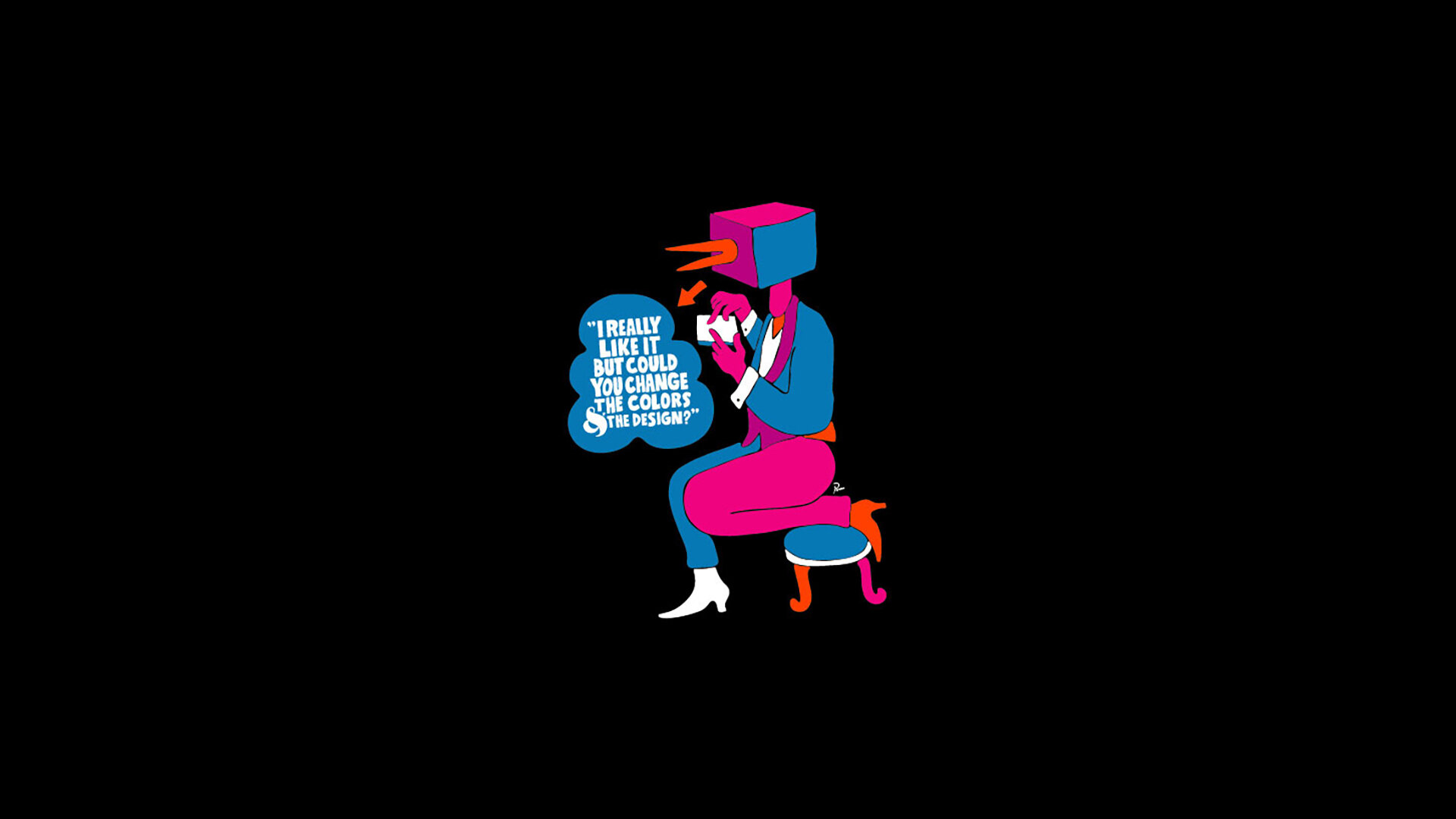
Next article
